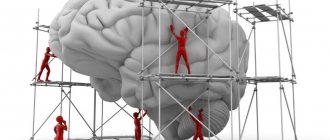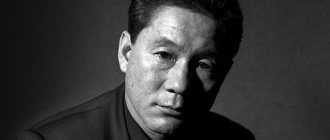The relaxation effect spreads and is consolidated. Unsystematic and superficial relaxation exercises give a temporary, incomplete effect. Only regular practice in accordance with the methodology leads to sustainable generalization and long-term positive relaxation effects. There is a division into long-term relaxation, which occurs during sleep, hypnosis, under the influence of pharmacological influence, and relatively short-term... If the weather permits, it is better to go out of town for a vacation. At least a few kilometers of walking in nature, breathing fresh air, pleasant fatigue: a little physical activity is one of the stages of preparation for quality rest. Try not to think about current affairs, problems - better yet, nothing at all, listen to the silence and feel how you become part of this silence.
Any relaxation at home is useful if only the following goal is achieved: the body is relaxed, completely rested, the mind is clear and bright, no thoughts hang over the territory of our brain. Everyone knows how to relax, and many believe that they know how to do it well - some with a glass of “tea”, others with “TV”, others in nature. But why do some people have a headache after such a vacation, while others don’t want to go to work? And every time, many hundreds of “working people” confirm the proverb that Monday is a hard day after a fruitful rest on the weekend. All this happens because each of us has our own understanding of what relaxation is, often interpreting it as lying on the couch listening to soothing music.
How to distinguish relaxation from rest?
Relaxation techniques are quite popular in yoga, psychotherapy, hypnosis and various health systems. Relaxation techniques, similar to meditation, are believed to be effective ways to combat stress. The purpose of relaxing muscles and relieving psycho-emotional tension is to get rid of stress and restore strength. It is no coincidence that relaxation is considered one of the most effective ways to improve performance: with the right approach, high physical and mental activity is ensured. For hypertension, physical exercise is also recommended. Special techniques allow muscles to relax, thereby minimizing the risk of destructive processes in muscle tissue and psychosomatic disorders.
What is relaxation?
Relaxation is considered to be a response to the ever-accelerating pace of life and the emergence of a large number of external negative factors. Interest in it increased in the second half of the twentieth century, but methods and methods of relaxation have been used since ancient times. Relaxation is understood as a means of relieving muscular and psychological tension, which is expressed in various methods and techniques that can be divided into three groups - medicinal, physiotherapeutic and psychophysiological.
Introduction
“People who know how to relax not only have greater mental flexibility, but are also better able to deal with stress.”
R. Copelan
Hello, dear friend! You've probably heard about such a phenomenon as relaxation. Many people underestimate and underestimate this very effective technique for gaining health. But in vain! I pay a lot of attention to HER, because... Relaxation is the basis for your own development, be it the development of personal qualities, the cure of serious illnesses, or the development of intuition.
For me personally, relaxation is a very important tool in the life of a modern person, which is filled with physical and mental tension, as well as such a common phenomenon as stress.
You may be surprised, but I mastered many relaxation techniques at an early age, and the word “meditation” became a staple in my vocabulary. And for this I am grateful to my parents, who gave me a good upbringing, based on which I followed the path of self-development and improvement.
Thank you Mom and Dad, you are my best teachers and friends!
Massage
Various relaxation techniques are especially effective for people with high muscle tension, as it is the cause of many diseases. People with low muscle tension are less likely to experience the effects of relaxation. When a person is exposed to stress, muscle tension occurs in the body. This tension is a defensive reaction that prepares the body for action. The body perceives a signal of a threat - stress, and activates active defense. (from Latin relaxatio - relief, relaxation) - a state of rest associated with complete or partial relaxation of muscles. There are two types of relaxation: long-term relaxation, which occurs during sleep, hypnosis and pharmacological treatment, and relatively short-term relaxation...
What does relaxation mean?
Psychophysiological relaxation techniques refer to techniques for relaxing muscles using the mind and exercise. To use these techniques, comfortable conditions are important: absence of bright light, comfortable temperature, clothing that does not restrict movement, absence of annoying noises and other irritants. It is not recommended to practice relaxation on a full stomach, as digestion interferes with relaxation. The first method involves relaxation of muscle tissue, which follows the initial tension. The essence of this technique is that a person must tense the muscles (one or more groups) for 5-10 seconds, and then focus on relaxing them for 15-20 seconds.
Summarize
The most common cause of muscle tension is stress. This is understandable: today’s rhythm of life presents us with various surprises, which we cannot always avoid. As soon as you allow negative thoughts or fear, the body immediately turns on the readiness mode to fight the enemy, tensing its muscles. It’s not for nothing that they say that all diseases are caused by nerves, because in this way we do not allow the body to function properly and disrupt its natural processes.
In fact, everything is simple: to eliminate pain and spasms in muscles and relax, you need to identify the source of anxiety and learn to control your emotions. Just for this, we have an online program “Mental Self-Regulation”, where you will learn to cope with stress, difficult relationships, anxiety and fear and other “inhibiting” factors.
Avoid physical overload, don’t get nervous over trifles and remember that your health is a treasure and needs to be protected!
Good luck!
We also recommend reading:
- Storytelling
- 10 Popular Exercises to Relieve Stress
- How to learn to relax: effective relaxation techniques
- Is it possible to do without a psychotherapist?
- The main ideas of Konstantin Stanislavsky
- Systematic desensitization of Joseph Wolpe
- Methods of mental self-regulation
- What to do with psychological problems?
- Methods of mental self-regulation: save yourself
- How to run correctly
- Isometric exercises
Key words:1Psychoregulation
Relax massage
Massage is one of the most favorite techniques for many people. The need to relax the body and, as a result, balance the emotional state is a proven necessity for a healthy, fulfilling life. Relaxation massage is designed to relax the body using light stroking and pressure. This, in turn, will give a calming impulse to the brain. As a result, the patient will completely relax and feel real peace and tranquility.
During the session, the cervical-collar area, back, legs, head and face are massaged; massage of the genitals and abdomen is excluded. During the process, most patients experience a state close to sleep, or even fall asleep. Everyone who has ever attended such a session knows what relaxation is in a massage room. For people leading an active lifestyle and holding responsible positions, this type of relaxation is simply vital.
Breathing and relaxation music play a special role in relaxation practice. The abdominal technique consists of slow, deep breaths through the nose and full exhalations through the mouth. Nervous tension goes away on its own when breathing is properly adjusted.
Relaxing with breathing
One of the reasons for muscle tone is stress. The abdominal muscles respond first to stimuli. These muscles, when tense, put pressure on the diaphragm during inhalation, which leads to a lack of oxygen in the body: it simply lingers in the upper part of the lungs and does not pass further. In this state, a person feels as if he can’t breathe, begins to get nervous, panics, and his breathing quickens, which only worsens the situation.
The abdominal breathing technique allows you to relax the abdominal muscles and restore the breathing process. It helps to avoid insomnia, depression and atherosclerosis and even get rid of some types of pain. A person can restore his condition in just three inhalations and three exhalations.
To do this, just do the following exercises:
- Lie on your back, close your eyes and concentrate on your bodily sensations. Take a few breaths in and out and watch the reaction of your chest and abdomen.
- Perform a cycle of slow inhalations and exhalations, go to your breathing pace, gradually getting rid of muscle tension.
- With one hand, press lightly on your stomach and try to make your stomach lift and lower your hand. This way you will learn to regulate the air flow.
- Inhale and, counting to ten, count the number of exhalations. Repeat the exercise for ten minutes.
Belly breathing has a positive effect on the nervous system, helps relieve tension during stress, lowers blood sugar levels and improves the body's condition after exercise.
Digestion also improves, the lungs are strengthened, and during breathing exercises the heart and internal organs are massaged. But this method of relaxation is not suitable for those who have high blood pressure, and it is best to start studying breathing practice under the supervision of specialized specialists [E. Mukhina, 2019].
So why is vertical (chest) breathing considered wrong? When we breathe with our chest, as we inhale, our chest and shoulders rise, which triggers the sympathetic part of the nervous system in the body. With proper breathing, the shoulders and chest remain motionless, only the stomach is involved.
Proper relaxation and tension of the intercostal muscles and working with the diaphragm will help you take full breaths and exhales. Try to exhale so that your stomach “sticks” to your back. Feel like you've squeezed all the air out of your lungs?
To reduce stress and relax your muscles, the 4-7-8 method is great: sit up straight, touch the back of your upper teeth with the tip of your tongue, and stay in that position throughout the exercise.
Now start counting: on the count of 4, inhale calmly and quietly through your nose. On the count of 7, hold your breath and exhale until the count of 8, making some sound. The exhalation should be longer than the inhalation.
You need to take 4 full breaths at a time. You can perform this exercise whenever you want, but it is not recommended to exceed the number of breaths in the first month of practice.
Another muscle relaxation exercise, the 365 method, can be done throughout the day or in between different activities. It's very simple: breathe at a rhythm of six cycles per minute (5 seconds inhale, 5 seconds exhale) for five minutes. Do this every day for a year (hence, by the way, the name “365 method”) [Rospotrebnadzor, 2020].
A useful technique for healthy breathing was developed by Alexandra Strelnikova, an opera singer and teacher. Initially, this technique was aimed at restoring the voice and getting rid of attacks of suffocation (the singer herself suffered from them), but it also has a beneficial effect on muscle tone.
When performing breathing exercises by A. Strelnikova, the neck, abs, legs, arms, shoulders, back and pelvis are involved. Exercises have a beneficial effect on the immune system, cleanse the bronchi, improve posture and are recommended as therapy for pathologies of the chest muscles.
Breathing exercises should be performed before meals or 1-1.5 hours after a meal. It is contraindicated for those who have high blood pressure, head trauma, internal bleeding, high temperature, or weakness.
And here are the exercises themselves:
“Palms”: this is a warm-up before starting a workout. Stand up straight and open your palms as if you are showing them to someone. Lower your elbows and keep your arms away from your body. Inhale noisily through your nose and at the same time clench your palms tightly into fists. As you exhale, open your palms and relax. Repeat the exercise 4 times and rest for 3 seconds. You need to do 24 repetitions.
“Nose”: stand straight, place your feet shoulder-width apart, keep your arms along your body. Bend forward, but do not touch the floor with your hands, while inhaling loudly and briefly through your nose during the second stage of the tilt, ending at the bottom point. Get up and repeat the exercise 8 times. The bends should be light and rhythmic; you do not need to bend as low as possible. Round your back and lower your head.
“Cat”: take a half-squat position and simultaneously turn your body and arms to the right, as if you are trying to catch something, and then to the left. Exhale naturally, your knees should be half bent, and make the turns at the waist. The exercise can be performed while lying in bed or sitting on a chair.
Shoulder Hug: Stand straight and bend your elbows, raising them to shoulder height. Hug yourself by the shoulders, spreading your arms in opposite directions. With each hug, inhale and exhale sharply through your nose. It is not recommended to perform this exercise in the first week of training; it is also contraindicated for those who have heart problems.
“Big Pendulum”: stand straight, place your feet at a distance slightly narrower than your shoulders. Bend forward as if you were trying to reach the floor with your hands and inhale. Without interrupting the exercise, straighten your body, lean back, hugging your shoulders with your arms. Inhale from the floor and exhale from the ceiling. Do not pause in breathing and do not increase the pace [I. Rudevich, 2020].
We recommend watching a video where the main cycle of breathing exercises by Alexandra Strelnikova is conducted by her student, Dr. Mikhail Shchetinin:
Relaxation techniques
There are a lot of relaxation methods. We will look at some of them:
It's no secret that music has a direct impact on people. Cheerful rhythmic music energizes us, inspires us, it is good to play sports with it, and melodic compositions, on the contrary, help us relax and unwind. Today we will look at such a direction as relaxation music, and what is it for?
The word “relaxation” itself comes from the Latin “relaxatio” - weakening or relaxation.
Candles
We hear many wise words from the media and the Internet, most of them require additional decoding. After all, not all citizens have a higher education, and those who have graduated from colleges and universities cannot put a few words together. All relaxation procedures are based on sensory stimulation (for example, massage, various types of gymnastics, spa capsule) or sensory deprivation, that is, deprivation of sensory stimuli (primarily floating in the air). If you correctly determine your type of perception, you will be able to choose the relaxation option that suits you. Just in case, you can try a little of everything: if you come out of the float tank feeling exhausted, look for a source of inner strength in a massage. The most important thing is to find your own relaxation and do it regularly.
Relaxation time
Finding free time to spend alone with yourself and completely relax is necessary for every person who cares about their own health. Muscle relaxation, removing tension, taking a relaxation bath is best before bed, when all the housework is done, homework with schoolchildren has been learned, and no one is interfering with proper rest. The opportunity to close yourself in a room and spend half an hour alone with your thoughts, lie down to pleasant music, fills the body with lightness and gives new strength. It is recommended to immerse yourself in relaxation whenever a person feels tired.
Currently reading: Watch your thoughts, for they become your destiny
Relaxation techniques based on music
Music is an accessible and pleasant means of relaxation. Individually selected compositions allow you to set yourself in a relaxing mood and immerse yourself in a state of peace and tranquility. Today it will not be difficult to find soothing music for sleep, massage, spa treatments with various tracks and genres on the Internet, or by downloading special applications to your gadget.
Music of a moderate tempo and not overly emotional is ideal. Specially selected, it contains the necessary harmonies that affect the relaxer’s hearing. They also differ in the choice of instrument or performance style. Musical directions to completely relax:
- Turkish (ney) or Indian (sitar) are considered authentic, lulling and bewitching with oriental melodies.
- Jazz, which helps you better concentrate on your own feelings.
- Electronic music is ambient, without a clear rhythm.
- Trip hop with a distinct beat.
- Dream pop with its melancholic motives.
- Chill-out is a light and relaxing background.
- Guitar indie.
The sounds of a singing forest, raging sea waves, summer rain or others also help you feel safe and immersed in a relaxing journey. In this article we tried to answer the question: what is relaxation? Relaxation is a step towards self-knowledge, which qualitatively raises the standard of living to a new level.
Why is relaxation needed?
To restore the physical strength of the body, there is sleep and rest; signs of emotional exhaustion arising from unfavorable external conditions and stressful situations can be eliminated by muscle relaxation. There are many techniques aimed at relaxing the body. All of them create a feeling of heaviness, warmth, and immerse a person in a state of peace. As a result, signs of overwork are relieved, performance increases, and mood improves. Musical accompaniment - sounds of nature, calm melodies make relaxation effective.
Literature
| This article or section contains a list of sources or external references, but the sources of individual statements remain unclear due to a lack of footnotes. Claims that are not supported by sources may be questioned and removed. You can improve the article by providing more accurate citations to your sources. |
- Uhlenbeck D., Ford J.
Lectures on statistical mechanics. - Per. from English - M.: Mir, 1965. - Bondarevsky S.I., Ablesimov N.E.
Relaxation effects in nonequilibrium condensed systems. Self-exposure due to radioactive decay. - Vladivostok: Dalnauka, 2002. - 232 p. - Ablesimov N. E., Zemtsov A. N.
Relaxation effects in nonequilibrium condensed systems. Basalts: from eruption to fiber. - M.: ITiG FEB RAS, 2010. - 400 p. - Osipov A.I.
[journal.issep.rssi.ru/page.php?year=1999&number=4&page=79 Thermodynamics yesterday, today, tomorrow. Part 1. Equilibrium thermodynamics] // SOZH. - 1999. - No. 4. - p. 79-85.
Goals of the methodology
What is relaxation therapy? Everyone understands this term differently. When going to a spa or to a psychologist, each person pursues his own goals. Some people want to get rid of complexes and obsessions, while others want to relax with good music with the help of an experienced coach. Be that as it may, total relaxation solves a lot of problems:
- elimination of muscle tension;
- working on emotional trauma;
- personal growth;
- replenishment of the body's energy reserves;
- healing of the body.
Relaxation methods
Since psychophysiological relaxation is considered to be the most accessible and popular technique, let’s consider the main relaxation methods within this area. So, the following relaxation methods are most widespread:
- muscular;
- mental (or figurative);
- respiratory.
The first method is to relax the muscle tissue, which occurs after preliminary tension. The meaning of the technique is that a person needs to tense his muscles (one or several groups) for 5-10 seconds, and then concentrate on relaxing them for 15-20 seconds.
The method of Dr. E. Jacobson (he developed progressive muscle techniques) includes more than two hundred exercises that are aimed at working with various muscles. The exercises are initially focused on working with muscles at the physical level, but regular exercises help a person develop the ability to relax through volitional effort.
Mental relaxation technique is a part of the meditation process that helps you relax by creating various mental images. A simple method, which is often used on a subconscious level, is breathing. Its meaning is to take breaths that help overcome anxiety and develop the correct type of breathing. The technique of performing the exercises may vary depending on the chosen direction of respiratory relaxation.
Gymnastics in the office
At work, many of us spend most of our time sitting at the computer. This has a detrimental effect on the muscles of the back and shoulder girdle, and can also impair blood circulation in the legs. Someone, on the contrary, spends their working day standing and thus overloads the muscles of the back and lower extremities.
This mode of operation is fraught with serious consequences, but they can be avoided if you regularly do certain exercises :
- Relaxation of the neck muscles : slowly tilt your head first to the right and then to the left shoulder. Repeat the side bends 10 times, then do another 10 head tilts forward and backward. The exercise can be done while sitting at your desk or standing.
- Gymnastics for the eyes: often, due to prolonged work at the computer, you may feel the heaviness of the eyelids, dryness and pain in the eyes. To get rid of discomfort, just switch your attention to another object and sit with your eyes closed for several minutes. It is best to turn your eyes in different directions, move them left and right, up and down and diagonally.
- Relaxing the shoulder muscles: rotate your shoulders forward and backward 10 times in each direction.
- Relaxing the back muscles : stretch your arms up, bringing your palms together, and bend to the right and left sides. You should feel your back muscles working. Perform 10 bends in each direction. Then stretch your arms forward and stretch to the right side, lock in this position for a few seconds and then stretch to the left.
- Relaxing the arm muscles: rotate your wrists 10 times in each direction, shake your relaxed arms. Clench and unclench your fist, spreading your fingers as far apart as possible. Shake each finger and rotate it in different directions.
- Relaxing the leg muscles: Straighten your leg, stretching it forward, and then bend it. Repeat the exercise 20 times on each leg. Move your feet in different directions (at least 15 times). Stand on your tiptoes and lower both feet at the same time from toe to heel. To improve blood circulation, perform calf raises with both legs while standing.
If you perform these exercises regularly 2-3 times a day, you can achieve the desired result faster. The main thing is to do them smoothly and not be afraid of possible discomfort at first (this is possible due to stiff muscles) [T. Mantulina, 2020].
Relaxation massage: indications and contraindications
A relaxing back massage is worth it. Everyone needs a massage because it is recommended for:
Relaxation massage has contraindications
- Chronic fatigue.
- Increased muscle tension.
- Frequent colds.
- Depression.
- Insomnia.
- Emotional and physical fatigue.
- Nervous overstrain.
- Stressful situations.
However, like any therapeutic procedure, a relaxing full body massage has some contraindications. Please read these warnings:
- AIDS.
- Presence of malignant tumors.
- Thrombosis.
- Acute or chronic osteomyelitis.
- Angiitis, inflammation of the lymph nodes.
- Infectious, pustular, inflammatory formations on the skin.
- Predisposition to bleeding.
- Acute inflammatory or infectious process in the body.
What is relaxation, the meaning of the word in medicine and Wikipedia
Many people don't feel the need to relax in any other way than by changing activities. Thoughts like “I’ll go on vacation, then relax” are no better than the simple idea “let’s relax in “that world”! Yes, at some point we will all “rest in peace”! And I want to relax and work happily and joyfully, and give birth to and raise “a bunch” of grandchildren, “plant a house”, “build a tree”…. Here, too, the main condition is complete peace and quiet, so try to explain to your roommates why they should not be disturbed during their vacation. If you can go to a separate room and lock yourself there, great; if not, you can retire to the bathroom.
Content
- 1
- 2 Description of the relaxation process 2.1 For monatomic gases
- 2.2 For polyatomic gases
- 2.3 For gas mixtures
- 2.4 For liquids
- 2.5 For solids and quantum liquids
Relaxation is a multi-stage process, since not all physical parameters of the system (distribution of particles over coordinates and momenta, temperature, pressure, concentration in small volumes and throughout the system, and others) tend to equilibrium at the same speed. Usually, equilibrium is first established in some parameter (partial equilibrium), which is also called relaxation
.
All relaxation
are nonequilibrium processes in which energy dissipation occurs in the system, that is, entropy is produced (in a closed system, entropy does not decrease). In different systems, relaxation has its own characteristics, depending on the nature of the interaction between the particles of the system; Therefore, relaxation processes are very diverse. The time required to establish equilibrium (partial or complete) in a system is called relaxation time.
The process of establishing equilibrium in gases is determined by the particle free path l and the free path time t (the average distance and average time between two successive collisions of molecules). The l/t ratio is of the order of the particle velocity. The quantities l and t are very small compared to the macroscopic length and time scales. On the other hand, for gases the free path time is significantly longer than the collision time t_0 (t\gg t_0). Only under this condition is relaxation determined only by pairwise collisions of molecules.
What does it mean to relax???
Please tell me… it’s really necessary….
Alla
Relaxation is a retreat into the subconscious of “sleep”; this is a high level of development of the “breathing” of the body, against the background of which the task of perfection pulsates, which is part of the result of life, noting the high energy of “time” in a person... Relaxation (from the Latin relaxatio - weakening, relaxation) - deep muscle relaxation, accompanied by the removal of mental voltage. Relaxation can be either involuntary or voluntary, achieved as a result of the use of special psychophysiological techniques. Involuntary relaxation (decreased skeletal muscle tone up to complete immobility) can occur as a pathological condition as a result of illness, or as a result of the use of special drugs - muscle relaxants. Conscious relaxation is an integral part of many (perhaps even most) mental, psychotherapeutic and hypnotic techniques; it is also very common in Buddhism and in Eastern healing teachings (Indian yoga, wushu, etc.), and is the most important stage in entering meditative trance. P.S. For philologists: IN RELAXATION all actions are without the participation of consciousness, while in RELAXATION - everything is with the participation of consciousness...
M
relax is a state of self-knowledge - when you understand all your capabilities to such an extent that you can move wherever you want and fly like the wind :). You become one with the entire universe... I wonder what's next? https:///catalog/rest.esoteric.lobotras
Which relaxation is more beneficial for the body?
At home, any relaxation is useful, as long as the goal is achieved: the body is relaxed, in complete peace, the head is clear and light, no thoughts swarm in our brain territory.
To achieve relaxation, various methods are used: muscle relaxation; breathing relaxation; visual relaxation.
Let's talk a little about each of these methods of entering relaxation.
- Muscle relaxation allows us to gain physical strength, since under the influence of muscle relaxation all our body parts are at rest, the muscles are relaxed and resting.
- Breathing relaxation is very important for maintaining our internal organs in good condition. During breathing exercises, the body is saturated with oxygen, which is distributed throughout the body and is important for the condition of the heart, lungs, and other organs. After all, for stable work they also need regular breaks in the form of relaxation.
- Visual relaxation is my favorite. Everyone knows that our eyes are both our friend and our enemy. The brain causes appropriate reactions and distributes beneficial or harmful effects throughout the body throughout our entire body after something comes into our field of vision.
If we constantly contemplated only the pleasant and good, then there would be less stress, brain stupors, and the whole body would work like a clock.
But precisely because we often see something that depresses us, nerve cells give aggressive impulses to the brain, and from there a wave of various problems goes towards almost every organ of the body.
Therefore, first of all, I turn to visual relaxation. Moreover, this is the most accessible for me, since I almost constantly work on a computer, and I can get everything bad, as well as everything good, from the monitor.
Currently, many different programs for visual relaxation have been developed. I suggested one of them at the beginning of the article.
Don't think that this is some kind of pampering. This is an effective method that allows you to distance yourself from thoughts and actions.
Changing wave patterns allow the brain to relax. I noticed that while practicing with this square of charm for 15-20 seconds, I simply cannot think about anything bad, even if I try to fixate myself for the sake of the experiment. Each new wave is an exhalation with a feeling of “Ah.” And this is good.
Such visual relaxation lifts your spirits and gives rise to new (positive) ideas. Try it! Just a few seconds, but the benefits are a hundredfold. Here is the answer to the question: “how to relax at home.”
Any visual relaxation is available at home.
It can be relaxation through art objects.
Set a rule for yourself: every day, lie down on a soft (!) bed for a few minutes and watch something distracted.
Music for meditation and relaxation
Special music is suitable as musical accompaniment in moments of relaxation. Rhythms and melodies help you look deep into yourself and achieve maximum relaxation. Cosmic overtones, shamanic rhythms, and the use of unusual musical instruments make trance-style motifs an indispensable companion for various practices and relaxation. The TOP 10 performers in the “relaxation” category are as follows:
- "Enigma"
- "Amethystium";
- "Broadway project";
- "Apparatus";
- "De phazz";
- "Air";
- "Deep forest";
- "BT";
- "Vangelis"
- "Jay-Jay Johanson."











